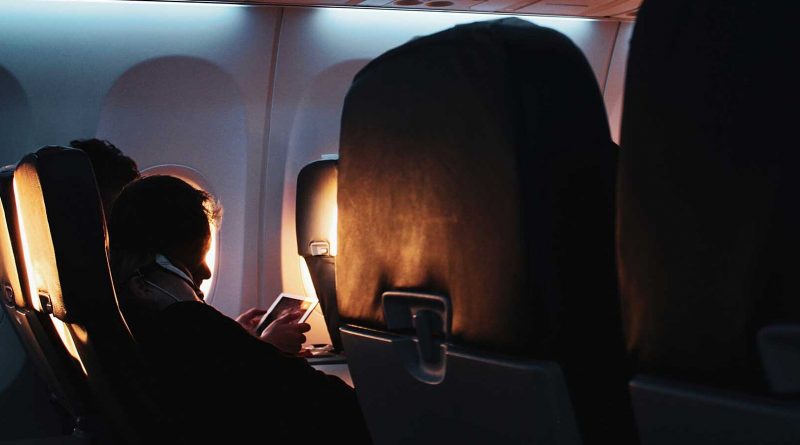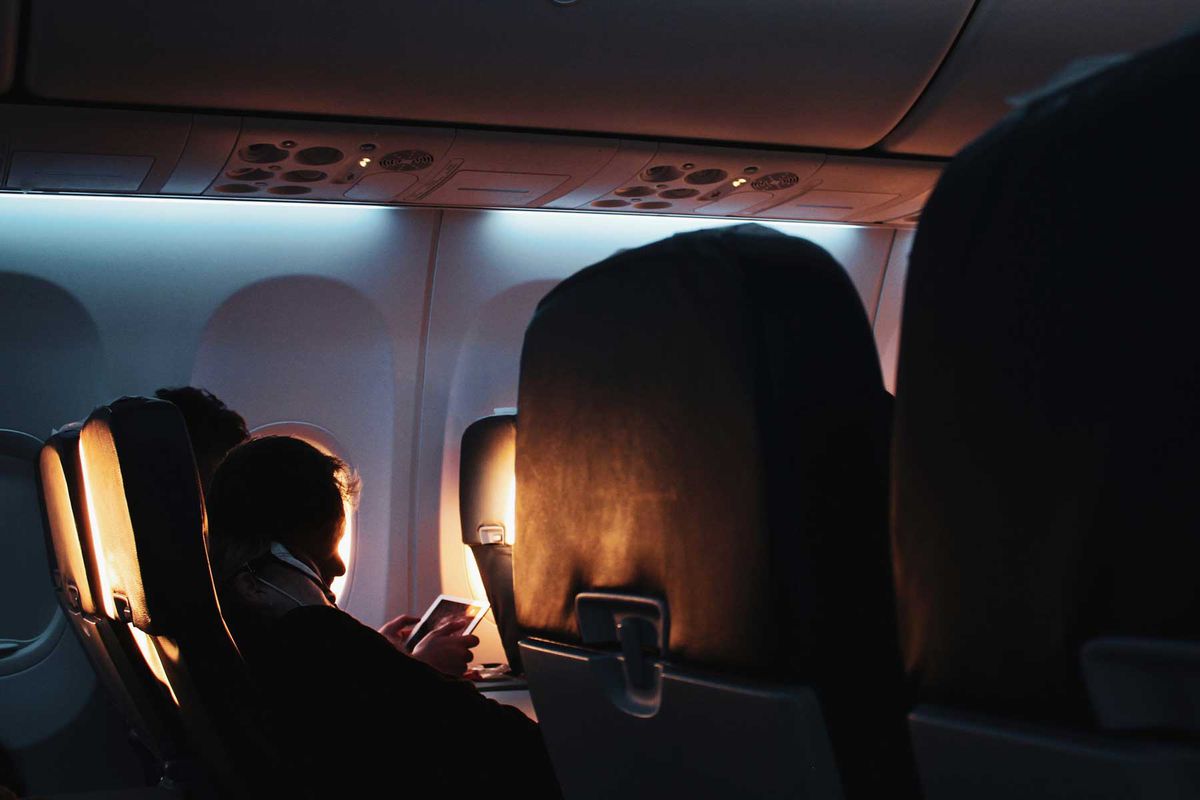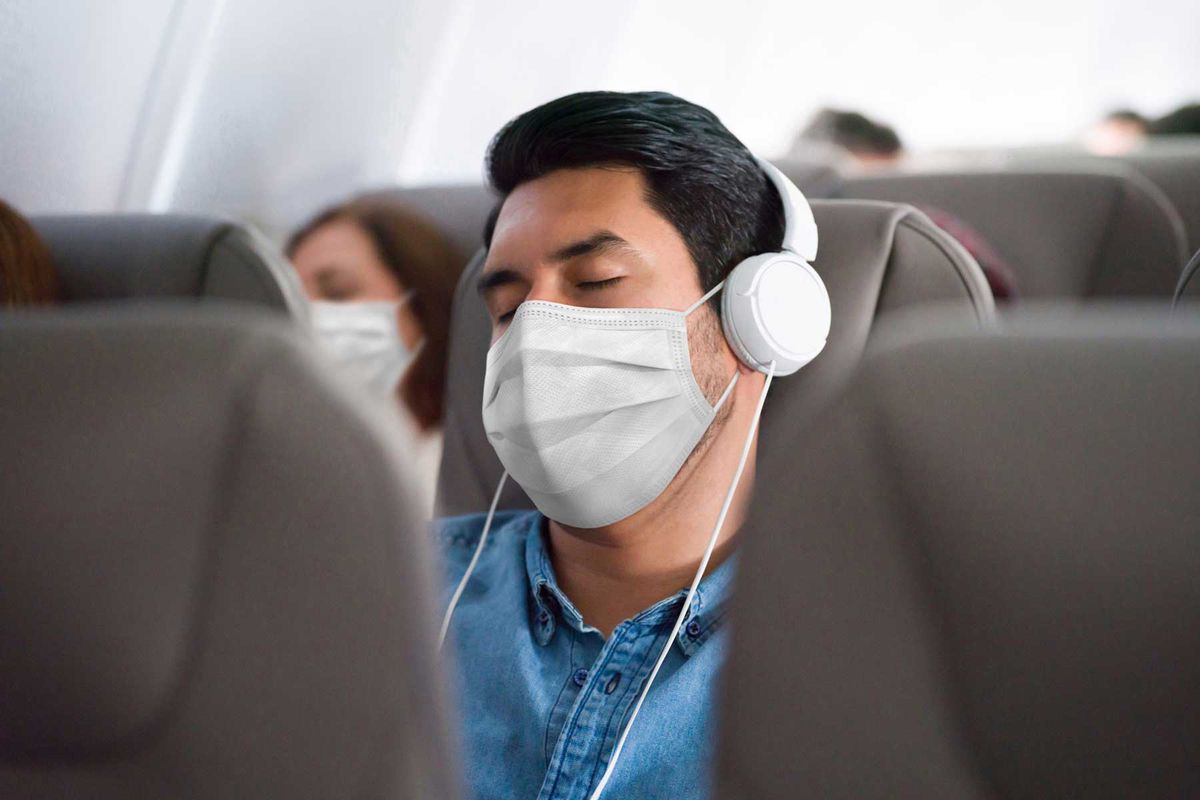13 Tips to Help You Sleep on Your Next Flight
Planning a trip to a faraway place is exciting, but in order to get to your dream destination, you might have to take a long-haul flight. To arrive feeling refreshed and ready to explore, you’ll want to sleep (at least a few hours) on the plane, but that can be tricky for even seasoned travelers. Noisy neighbors, rocky turbulence, crying babies — although distracting, these things are simply out of your control, so focus on what you can do to make your flight more comfortable. As a frequent flier who takes her sleep schedule very seriously, I’ve acquired some tips and tricks that I use on every long-haul flight. Here are our top tips for how to sleep on a plane.
1. Splurge on first class (or premium economy).
First-class lie-flat seats are optimal for a mid-flight snooze, thanks to their ample space and privacy, but there are ways to make sure that your trip is comfortable without splurging on a pricey ticket. Premium economy can be a great compromise, with extra legroom, more space to recline, and even wider seats (depending on the airline), all for less than the price of a business or first-class seat.
2. Choose your seat wisely in the main cabin.
If you’d rather save money and stick to the main cabin, choose your seat strategically. Some fliers prefer window seats, so they have something to lean against while catching some shut-eye, while seats located further away from the galley or restrooms are ideal if you want to avoid any commotion of people passing by throughout the flight. Bulkhead seats have extra room to stretch your legs, since there’s no one directly in front of you, but they’re sometimes close to the restrooms and galleys, which can be distracting.
3. Consider the flight’s timing.
If you’re planning for a long-haul flight that crosses multiple time zones, you’ll need to keep a few things in mind. Dedicated travelers might try to adjust their sleep schedules days ahead of the flight to better accommodate their destination’s time zone, but there are some things you can do that won’t interfere with your daily life before your journey. When choosing a flight, consider the times that best fit with your typical sleep schedule. For example, if you’re flying to Europe from the U.S. and have options for overnight flights departing at 7 p.m. or 11 p.m., pick the time closest to when you would normally fall asleep.
4. And fly direct whenever possible.
To maximize your sleep time, choose direct flights whenever you can. If you choose two four-hour flights, you might be able to sleep for a few hours total, but if you opt for one eight-hour flight, you’ll be able to settle in and get cozy for several hours, feeling far more refreshed when you reach your destination. Plus, you won’t have to stress over making any connecting flights when you go direct.
5. Skip the coffee.
Avoid drinking caffeinated beverages just before the flight, and ask your doctor for advice if you’re thinking about taking any sleeping aids or supplements to help you fall asleep. If certain foods or alcohol make it difficult for you to sleep normally, you’ll want to pass on those before and during your flight, too. And don’t forget to stay hydrated.
6. Don’t skimp on comfort.
Sure, neck pillows, noise-canceling headphones, and eye masks might take up a little extra room in your carry-on, but you’ll be happy you packed them once the lights go down and you have hours to go before you reach your destination. Invest in a comfortable sleep mask that will block out light and a neck pillow that will support your head. While the horseshoe-shaped neck rings are most common, there are tons of innovative options that cater to different needs. And high-quality, noise-canceling headphones will block out loud neighbors and the plane’s white noise.
7. Dress for the occasion.
We all want to look like glamorous jet-setters upon arriving at our final destination, but this is one time when you might want to put comfort over style. A comfortable travel outfit is a must, and be sure to wear layers. Planes can range from toasty to downright freezing, so wear a cardigan or sweater to stay warm and cozy during your flight.
8. Pick a comfortable mask.
There’s one more thing you can’t fly without these days: an approved face covering. If you’re taking a long-haul flight, you’ll want to bring a face mask that will be comfortable for the duration of your trip. We’ve even rounded up our top picks for the most comfortable face masks for travel.
9. And keep it on your face.
Make sure your face covering is on and secure before dozing off, so flight attendants don’t have to wake you up to ask you to adjust it.
10. Buckle up.
Whether you use the plane’s blanket or bring your own, be sure to fasten your seatbelt over it, so flight attendants know you’re buckled up and won’t have to disturb you in case of turbulence.
11. Stick to your sleep routine.
When it’s finally time to wind down, stick to your usual sleep routine. This could include meditation, stretching, or avoiding excess blue light from the in-flight entertainment system or your cell phone.
12. Relax.
Easier said than done, but you’ll need to relax if you hope to catch some Zs on your next flight. Don’t stress if you can’t fall asleep right away — just sit back and try to get as much rest as you can before setting off on your adventure.
13. Take it easy on your arrival day.
Even frequent fliers have trouble falling asleep on planes — between the noise, uncomfortable seats, and excitement about reaching your destination, it can be hard to get quality rest. Most experts agree that it’s best to stay up and acclimate to the local time zone when you arrive, so try not to fall asleep as soon as you get to your hotel. Take it easy and avoid packing too much into your arrival day, so you’re not too sleepy for the rest of your vacation.
Elizabeth Rhodes is an associate digital editor at Travel + Leisure. Follow her adventures on Instagram @elizabetheverywhere.
Source: Read Full Article





